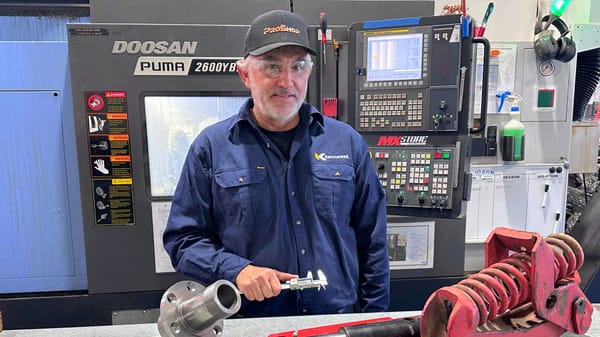Headspace will move to bigger, more responsive walk-in centre
The Murray Bridge mental health service will leave the old railway building that has been a one-stop shop for youth since 2008.

This story was originally published behind Murray Bridge News’ paywall. Paywalled stories are unlocked four weeks after publication. Can’t wait that long? Subscribe here.

After 12 years, the age of Murray Bridge's old railway station being a one-stop shop for youth is coming to an end.
Youth centre The Station will remain, but mental health organisation Headspace will move to a bigger, more modern location by the end of the year.
The federal government announced late last month it would provide more than $686,000 to establish a walk-in clinic in Murray Bridge.
At the new site, Headspace will offer more quick, early interventions for young people dealing with relationship breakdowns, unemployment or other life challenges, as well as the longer-term therapy it already provides to those who need it.
Centre manager Suzanne Fuzzard, pictured, said the organisation had no room to grow at its present site, which it had leased from the Murray Bridge council free of charge since 2008.
“We love this building, we love the space downstairs, it’s such a great youth building, but (for) a clinical health service it’s not ideal,” she said.
For example, half a dozen consulting staff members had just three rooms to use for appointments.
Moving would allow Headspace to hire more staff and return to its approachable roots, she said: “responding to people who decide ‘today's the day I’ll come here and get help’”.
“Instead of saying ‘you’ll get a call from a triage worker within three days, then you can make an appointment within weeks or months’, it would be later in the day, or ‘if you wait half an hour we’ll give you a one-hour appointment and try to help you as much as we can’,” she said.
“If it helps, great; if not, you come back to another walk-in session or ongoing therapy.
“It’s about being timely, responsive, working with people's motivation in the moment.
“If we can keep kids going to school, sleeping at night, eating well, keeping their relationships and friendships alive, stop them becoming homeless, there's evidence that you can make massive changes with that.”

Ms Fuzzard said waiting times fluctuated for young people in Murray Bridge, but that six-month delays were not uncommon elsewhere.
“In the seven and a half years I’ve been here, there has been a significant shift,” she said.
“We’re seeing a greater severity of mental health issues for young people.
“Demand is incredibly high.”
Perhaps that meant more young people were experiencing mental health issues, she suggested; but perhaps they were also more open about seeking help than they might have been a decade ago.
“Headspace has done a great job in reducing the stigma (around mental health), and has normalised help-seeking for young people,” she said.
“Young people know our brand.”
Local funding matches national boost for mental health
Federal MP Tony Pasin said the funding for Headspace Murray Bridge was part of a $24.5 million commitment to reduce waiting times at centres around Australia.
“One in four young Australians is affected by a mental health illness every year, and as we battle COVID-19 it’s more important than ever that we prioritise mental health,” he said.
“Headspace is somewhere young people can get professional help, peer support and feel comfortable enough to tackle their challenges in a way that is right for them” – for free or at a low cost.
Council chief executive officer Michael Sedgman said it was too early to say what would become of the rooms currently occupied by Headspace.
However, he anticipated the council would likely use the space for youth-related activities of some kind.
- Get help: Visit headspace.org.au any time or 3-5 Railway Terrace, Murray Bridge between 9am and 5pm weekdays, or call 8531 2122. In an emergency, call 000, Lifeline on 13 11 14 or the Suicide Call Back Service on 1300 659 467.
Photo of Suzanne Fuzzard (top): Peri Strathearn. Photo of Cathy Spanton, Pia Grantham-Young, Richard Burden and Tony Pasin: Office of Tony Pasin.





